
The Timeless Journey of Via Francigena
Discover the historic Via Francigena in Italy, a captivating pilgrimage route through medieval towns, picturesque countryside, and iconic cities like Siena and Rome.
Via Francigena, a historic pilgrimage route, stretches from Canterbury to Rome, inviting travelers to embark on a journey through centuries of European history. In Italy, this ancient path weaves through charming medieval towns, serene countryside, and breathtaking landscapes, offering a unique perspective on the region's rich cultural heritage. As you walk the Via Francigena in Italy, you'll pass through Tuscany's rolling hills, renowned for their vineyards and olive groves. The route takes you to iconic cities like Siena, where the majestic Piazza del Campo and the stunning Siena Cathedral await. In Lazio, the journey culminates in the Eternal City of Rome, where history and modernity coexist in a captivating blend. Along the way, you'll encounter hospitable locals, savor delectable Italian cuisine, and discover hidden gems off the beaten path. The Via Francigena is not just a physical journey; it's a spiritual and cultural odyssey that connects you with the soul of Italy. Whether you're a seasoned pilgrim or a curious traveler, this route promises an unforgettable adventure.
Local tips in Via Francigena
- Wear comfortable walking shoes as the terrain varies from flat paths to hilly regions.
- Carry a reusable water bottle; water fountains are common along the route.
- Plan your accommodation in advance, especially during peak seasons.
- Learn basic Italian phrases; it helps in rural areas where English is less common.
- Take breaks to explore local markets and try regional specialties.
- Visit historic churches and sites along the way for a deeper cultural experience.
- Consider traveling in spring or autumn for milder weather and fewer crowds.
The Timeless Journey of Via Francigena
Via Francigena, a historic pilgrimage route, stretches from Canterbury to Rome, inviting travelers to embark on a journey through centuries of European history. In Italy, this ancient path weaves through charming medieval towns, serene countryside, and breathtaking landscapes, offering a unique perspective on the region's rich cultural heritage. As you walk the Via Francigena in Italy, you'll pass through Tuscany's rolling hills, renowned for their vineyards and olive groves. The route takes you to iconic cities like Siena, where the majestic Piazza del Campo and the stunning Siena Cathedral await. In Lazio, the journey culminates in the Eternal City of Rome, where history and modernity coexist in a captivating blend. Along the way, you'll encounter hospitable locals, savor delectable Italian cuisine, and discover hidden gems off the beaten path. The Via Francigena is not just a physical journey; it's a spiritual and cultural odyssey that connects you with the soul of Italy. Whether you're a seasoned pilgrim or a curious traveler, this route promises an unforgettable adventure.
When is the best time to go to Via Francigena?
Unmissable attractions to see
Park of the Aqueducts
Explore the Park of the Aqueducts, where nature meets the engineering marvels of ancient Rome, creating a tranquil oasis for every traveler.

Park of the Appian Way
Explore the ancient Appian Way in Rome, a serene park filled with historical treasures, picturesque landscapes, and a peaceful escape from the city.

Catacombs of St. Callixtus
Uncover the mysteries of early Christianity at the Catacombs of St. Callixtus, a key archaeological site in Rome's ancient landscape.

Piazza Vittorio Emanuele II
Discover tranquility at Piazza Vittorio Emanuele II, a beautiful city park in Rome, rich in history and surrounded by vibrant local culture.
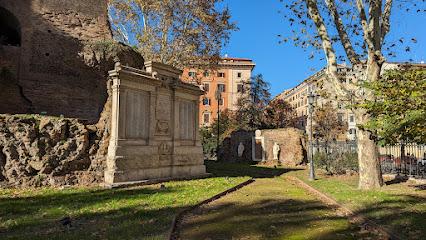
IKONO Roma
Discover IKONO Roma, where art, technology, and culture blend into an unforgettable multi-sensory journey through the heart of Rome.

Capannelle Racecourse
Discover the thrilling world of horse racing at Capannelle Racecourse, a vibrant venue in Rome offering excitement and entertainment for every visitor.

Porta Maggiore
Discover Porta Maggiore, a stunning historical gateway in Rome that connects the past with the vibrant present of the Eternal City.

Villa Gordiani
Experience the serene beauty and rich history of Villa Gordiani, a tranquil park in Rome perfect for relaxation and exploration.

Porta Maggiore
Explore Porta Maggiore, a stunning ancient gateway in Rome that showcases the city's rich history and architectural marvels.

Basilica di Santa Croce in Gerusalemme
Discover the serene beauty and rich history of Basilica di Santa Croce in Gerusalemme, a must-visit basilica in Rome filled with art and sacred relics.

Pontifical Sanctuary of the Holy Stairs
Explore the Pontifical Sanctuary of the Holy Stairs, a revered pilgrimage site in Rome, steeped in history, faith, and breathtaking art.

Catacombs of Saint Sebastian
Explore the Catacombs of Saint Sebastian in Rome, where history and faith intertwine in an ancient burial site rich with early Christian art and culture.
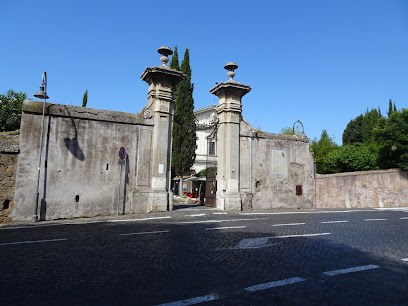
Catacombs of Domitilla
Uncover the rich history of early Christianity in Rome at the Catacombs of Domitilla, a captivating journey into the ancient underground world.

Villa Sciarra
Experience the serene beauty of Villa Sciarra, a historic park in Rome offering lush gardens and breathtaking views for a perfect day out.

Museo Nazionale Romano, Palazzo Altemps
Explore the ancient wonders of Museo Nazionale Romano, Palazzo Altemps in Rome - a captivating archaeological museum filled with history and art.

Markets, malls and hidden boutiques
Humana Vintage Roma
Explore the charm of vintage fashion at Humana Vintage Roma, where unique style meets sustainable shopping in the heart of Rome.

Pifebo Vintage Shop - Valeri
Explore the charm of vintage fashion at Pifebo Vintage Shop in Rome, where every piece tells a story and reflects the city's rich style history.
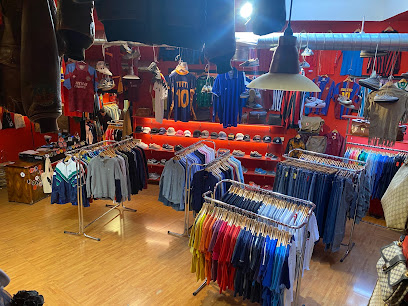
Sitenne Vintage Store
Explore Sitenne Vintage Store in Rome for unique vintage finds, bridal attire, and theatrical costumes that offer a glimpse into fashion history.

Twice Vintage Shop
Explore Twice Vintage Shop in Rome for unique vintage clothing and eco-friendly fashion treasures that tell a story.

SHOP IN LONDON
Explore a vintage clothing store in Rome, where every piece is a unique treasure, perfect for style seekers and fashion lovers.
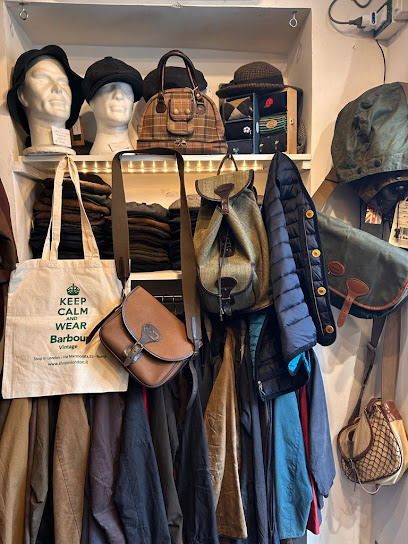
The Oliver wardrobe
Discover unique vintage and baby clothing at The Oliver Wardrobe, a charming used clothing store in the heart of Rome.

Borgo Shop
Discover spiritual treasures at Borgo Shop, a unique religious goods store in the heart of Rome, perfect for souvenirs and sacred art.

BD-SAS
Discover the essence of Rome at BD-SAS, a charming souvenir store offering unique bags and gifts that embody Italian craftsmanship.
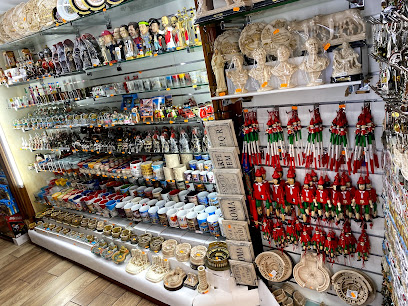
AGILE ITALIA
Explore the enchanting world of costumes, magic, and circus at AGILE ITALIA, where imagination knows no bounds!

Handmade
Explore 'Handmade' in Rome: A unique gift shop featuring stunning handmade jewelry and exquisite glassware, perfect for memorable souvenirs.

Kiaramente
Discover unique fashion accessories at Kiaramente, where style meets elegance in the heart of the city.

Souvenir Shop
Explore a charming souvenir shop in Rome, offering unique gifts and mementos that embody the spirit of the Eternal City.

Borgo Ecclesia
Discover Borgo Ecclesia in Rome, a unique religious goods store offering authentic spiritual items and souvenirs in a serene atmosphere.

souvenir shop
Explore a delightful souvenir shop in Rome, offering unique mementos and local crafts that embody the city's rich culture and history.

Il Baule shopping srl
Explore Il Baule, the ultimate destination for unique home goods in Italy, showcasing a perfect blend of elegance and functionality.

Essential bars & hidden hideouts
FRENI E FRIZIONI
Discover Freni e Frizioni, Rome's iconic cocktail bar known for its innovative drinks and vibrant atmosphere, perfect for a night out in the Eternal City.

Drink Kong
Discover Drink Kong, Rome's premier cocktail bar, where innovative mixology meets vibrant nightlife in the heart of the city.

Wine Bar De' Penitenzieri
Discover the authentic Italian wine experience at Wine Bar De' Penitenzieri in Rome, where exquisite flavors and warm hospitality await every visitor.

Jerry Thomas Speakeasy
Discover the hidden gem of Rome at Jerry Thomas Speakeasy, where classic cocktails and vintage charm create an unforgettable night out.

The Race Club
Discover the elegance of The Race Club, Rome’s premier cocktail bar, where exceptional drinks and a vibrant atmosphere await.

Mr. Brown Pub
Experience the vibrant atmosphere at Mr. Brown Pub, a must-visit spot for tourists in Rome, offering local drinks and delicious bites.

La Botticella of Poggi Giovanni
Discover La Botticella of Poggi Giovanni, a cozy bar in Rome offering an exquisite selection of wines and a delightful atmosphere to relax and unwind.

Ice Club Roma
Experience the coolest nightlife at Ice Club Roma, where unique cocktails and vibrant parties await you in the heart of the Eternal City.

Spirito
Discover Spirito, Rome's premier cocktail bar offering exquisite drinks, delightful cuisine, and a vibrant atmosphere for an unforgettable nightlife experience.

The Basement - Pub. Cocktail Bar. Events
Explore The Basement in Rome: A vibrant pub and cocktail bar offering an unforgettable nightlife experience in the heart of the city.

Club Derrière
Discover the vibrant nightlife of Rome at Club Derrière, where unique cocktails and a lively atmosphere create unforgettable nights.

The Court Bar. Palazzo Manfredi
Experience the epitome of Roman elegance at The Court Bar, where handcrafted cocktails meet stunning views of the Colosseum.

Big Hilda Public Bar
Discover the vibrant ambiance at Big Hilda Public Bar, a must-visit pub in Rome for an authentic local experience and delightful drinks.

The Barber Shop
Discover The Barber Shop - Rome's vibrant cocktail bar offering expertly crafted drinks and a lively atmosphere in a unique speakeasy setting.

Retrogusto
Experience the cozy charm of Retrogusto, Rome's favorite beer hall, offering local brews and a welcoming atmosphere perfect for unwinding.

Local Phrases about Via Francigena
-
- HelloCiao
[chow] - GoodbyeArrivederci
[ah-ree-veh-dehr-chee] - YesSì
[see] - NoNo
[no] - Please/You're welcomePer favore/Prego
[pehr fah-VOH-reh/preh-goh] - Thank youGrazie
[GRAH-tsyeh] - Excuse me/SorryMi scusi/Scusa
[mee SKOO-zee/skoo-zah] - How are you?Come stai?
[koh-meh stai] - Fine. And you?Bene. E tu?
[beh-neh. eh too] - Do you speak English?Parli inglese?
[PAHR-lee een-GLEH-zeh] - I don't understandNon capisco
[non kah-PEES-koh]
- HelloCiao
-
- I'd like to see the menu, pleaseVorrei vedere il menu, per favore
[vohr-ray veh-DEH-reh eel MEH-noo, pehr fah-VOH-reh] - I don't eat meatNon mangio carne
[non MAHN-joh KAR-neh] - Cheers!Salute!
[sah-LOO-teh] - I would like to pay, pleaseVorrei pagare, per favore
[vohr-ray pah-GAH-reh, pehr fah-VOH-reh]
- I'd like to see the menu, pleaseVorrei vedere il menu, per favore
-
- Help!Aiuto!
[ah-YOO-toh] - Go away!Vai via!
[vai VEE-ah] - Call the Police!Chiama la polizia!
[KYAH-mah lah poh-LEE-tsyah] - Call a doctor!Chiama un medico!
[KYAH-mah oon MEH-dee-koh] - I'm lostMi sono perso
[mee SOH-noh PEHR-soh] - I'm illSto male
[stoh MAH-leh]
- Help!Aiuto!
-
- I'd like to buy...Vorrei comprare...
[vohr-ray kohm-PRAH-reh] - I'm just lookingSto solo guardando
[stoh SOH-loh gwahr-DAHN-doh] - How much is it?Quanto costa?
[KWAHN-toh KOH-stah] - That's too expensiveÈ troppo caro
[eh TROH-poh KAH-roh] - Can you lower the price?Puoi abbassare il prezzo?
[pwoh-ee ahb-bah-SAH-reh eel PREHT-soh]
- I'd like to buy...Vorrei comprare...
-
- What time is it?Che ora è?
[keh OH-rah eh] - It's one o'clockE' l'una
[eh LOO-nah] - Half past (10)Sono le dieci e mezza
[SOH-noh leh dyeh-chee eh MEHT-zah] - MorningMattina
[maht-TEE-nah] - AfternoonPomeriggio
[poh-meh-REE-joh] - EveningSera
[SEH-rah] - YesterdayIeri
[YEH-ree] - TodayOggi
[OH-jee] - TomorrowDomani
[doh-MAH-nee] - 1Uno
[OO-noh] - 2Due
[DOO-eh] - 3Tre
[TREH] - 4Quattro
[KWAT-troh] - 5Cinque
[CHEEN-kweh] - 6Sei
[SEH-ee] - 7Sette
[SEHT-teh] - 8Otto
[OH-toh] - 9Nove
[NOH-veh] - 10Dieci
[DYEH-chee]
- What time is it?Che ora è?
-
- Where's a/the...?Dov'è un/il...?
[doh-VEH oon/eel] - What's the address?Qual è l'indirizzo?
[kwahl eh leen-DEE-ree-tsoh] - Can you show me (on the map)?Puoi mostrarmi (nella mappa)?
[pwoh-ee mohs-TRAHR-mee (NEH-lah MAHP-pah)] - When's the next (bus)?Quando è il prossimo (autobus)?
[KWAHN-doh eh eel PROHS-si-moh (ow-TOH-boos)] - A ticket (to ....)Un biglietto (per ....)
[oon beel-LYEH-toh (pehr)]
- Where's a/the...?Dov'è un/il...?
History of Via Francigena
-
The Via Francigena, also known as the 'Road from France,' dates back to the early Middle Ages. It served as a crucial pilgrimage route to Rome, connecting Canterbury in England to the Eternal City. The earliest documented reference comes from the 9th century when Archbishop Sigeric of Canterbury walked the route to receive his pallium from the Pope in Rome.
-
During the 10th and 11th centuries, the Via Francigena became a vital artery for pilgrims journeying to Rome, the heart of Christendom. Pilgrims from across Europe, including kings, clerics, and commoners, trod this path, seeking penance, spiritual growth, or miraculous cures. The route fostered a network of hospices, monasteries, and churches, turning it into a spiritual and cultural highway.
-
The Via Francigena was not just a religious route but also a significant commercial corridor. Merchants and traders utilized the path to exchange goods between northern and southern Europe. This economic activity spurred the growth of towns and markets along the route, contributing to the prosperity of regions like Tuscany, Lazio, and Lombardy.
-
Travelers along the Via Francigena encounter a rich tapestry of architectural styles, ranging from Romanesque to Gothic. Key landmarks include the Cathedral of San Martino in Lucca, the medieval towers of San Gimignano, and the Papal Basilica of St. Peter in Rome. These structures not only reflect the religious fervor of the times but also the artistic and architectural advancements of the medieval period.
-
The Renaissance era brought renewed interest in the Via Francigena as humanists, artists, and scholars traveled to Italy to experience the revival of classical learning and art. The route became a conduit for the exchange of ideas and culture, influencing the broader European Renaissance.
-
In recent decades, the Via Francigena has experienced a resurgence in popularity. Efforts to map and restore the ancient path have been undertaken by organizations like the European Association of Via Francigena. Today, it serves as a cultural itinerary, attracting modern pilgrims and tourists interested in history, spirituality, and nature.
Via Francigena Essentials
-
The Via Francigena in Italy stretches from the Great St. Bernard Pass in the north to Rome in the south. The closest international airports are in Milan, Florence, Pisa, and Rome. From these cities, you can take regional trains or buses to towns along the Via Francigena. Renting a car is another option, allowing you to explore the route at your own pace.
-
Transportation options along the Via Francigena include trains, buses, and taxis. Regional trains connect many of the towns along the route, and buses are available for shorter distances. For more flexibility, you may consider renting a car. Cycling is also a popular way to travel the Via Francigena, with many routes adapted for cyclists.
-
The official currency in Italy is the Euro (EUR). Credit and debit cards are widely accepted in hotels, restaurants, and shops, but it is advisable to carry some cash, especially in smaller villages. ATMs are available in most towns along the Via Francigena. Ensure you have adequate cash for remote areas where card payment may not be available.
-
The Via Francigena is generally safe for tourists. However, like any travel destination, it is important to take standard precautions. Avoid walking alone at night in unfamiliar areas and keep your belongings secure in crowded places. Some larger cities along the route, such as Rome and Florence, have areas with higher crime rates targeting tourists, so stay vigilant.
-
In case of emergency, dial 112 for immediate assistance. Emergency services include police, medical assistance, and fire services. It is recommended to have travel insurance that covers medical emergencies. Pharmacies are available in most towns for minor health issues, and larger towns have medical facilities.
-
Fashion: Do dress modestly, especially when visiting religious sites. Avoid wearing revealing clothing. Religion: Do respect local customs and traditions. Always cover your shoulders and knees when entering churches. Public Transport: Do validate your ticket before boarding trains and buses. Don't eat or drink on public transport. Greetings: Do greet people with a 'buongiorno' (good morning) or 'buonasera' (good evening). A handshake is common. Eating & Drinking: Do try local delicacies and accept food offerings graciously. Don't leave a tip on the table; it is usually included in the bill.
-
To experience the Via Francigena like a local, visit local markets and try regional specialties. Engage with locals, as they are often friendly and eager to share their knowledge about the area's history and culture. Take time to explore not just the main pilgrimage route but also the small villages and hidden gems along the way. Participate in local festivals and events to immerse yourself in the local culture.
Nearby Cities to Via Francigena
-
Things To Do in Vatican Pinacoteca
-
Things To Do in Gregorian Etruscan Museum
-
Things To Do in Vatican Gardens
-
Things To Do in Apostolic Palace
-
Things To Do in Sistine Chapel
-
Things To Do in St. Peter's Basilica
-
Things To Do in Vatican Necropolis
-
Things To Do in St. Peter's Square
-
Things To Do in Rome
-
Things To Do in Orvieto
-
Things To Do in Assisi
-
Things To Do in Perugia
-
Things To Do in Montepulciano
-
Things To Do in Arezzo
-
Things To Do in Siena













